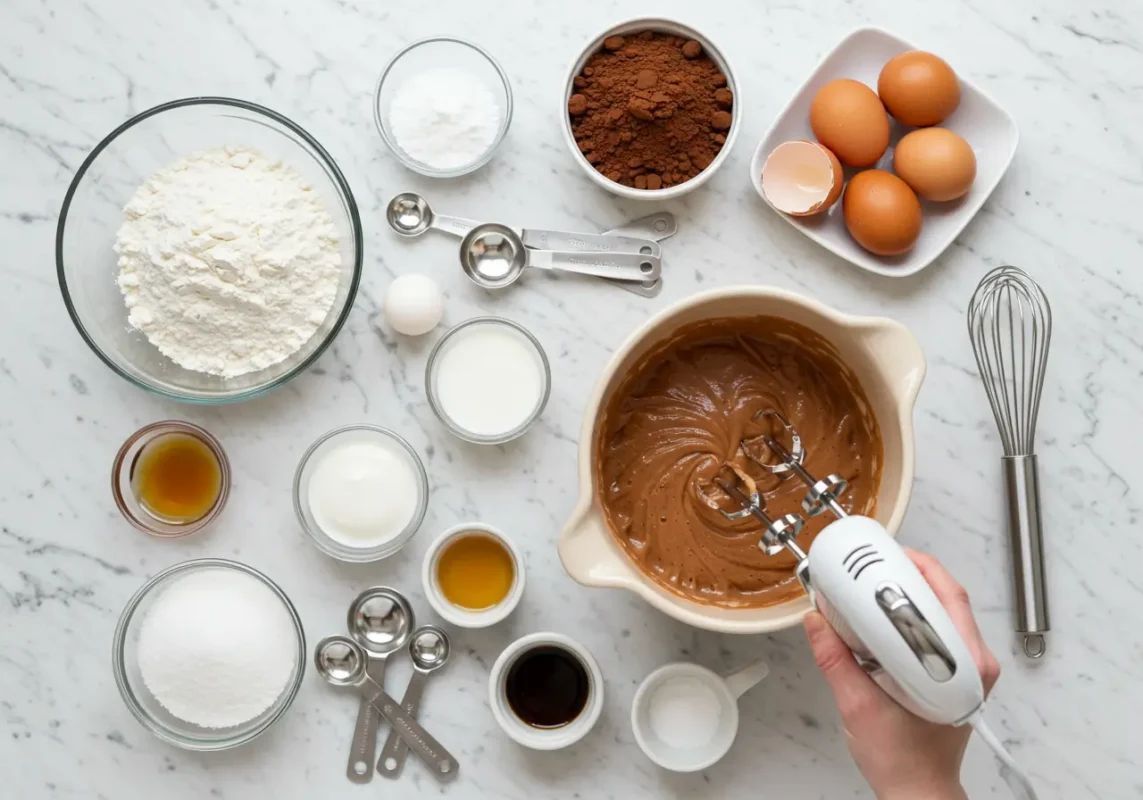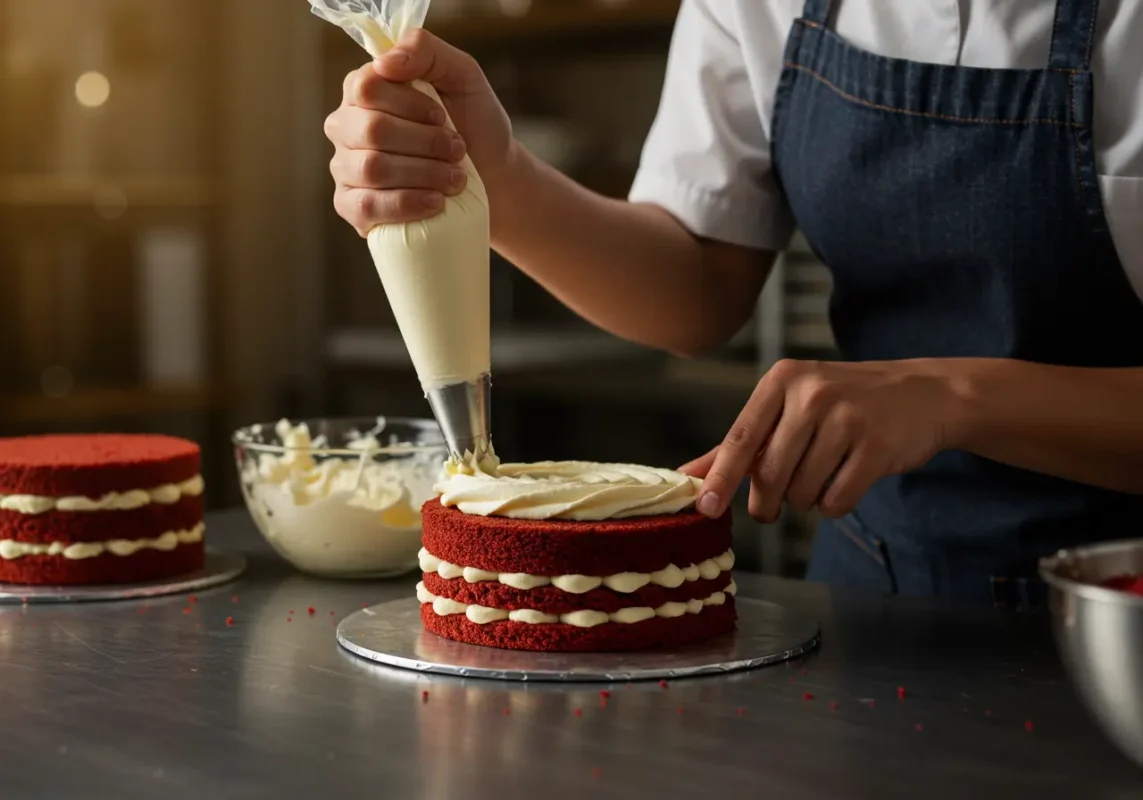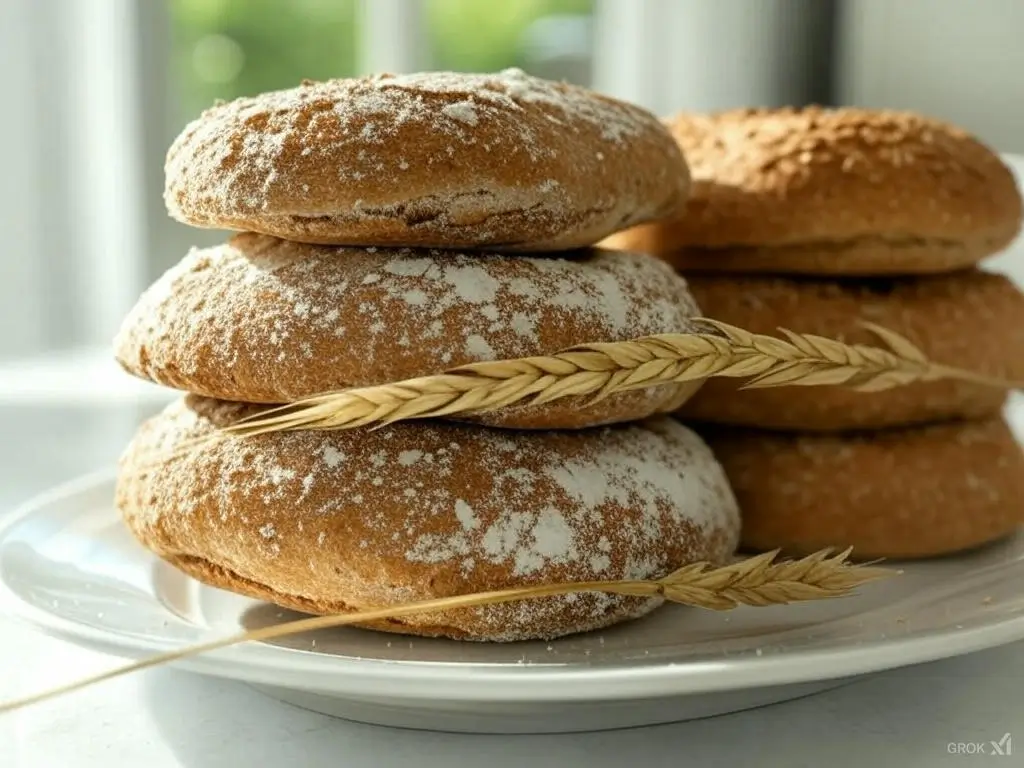Before we dive into the nitty-gritty of this debate, let’s set the stage. The question “Is red velvet really just chocolate dyed red?” has sparked curiosity and controversy among bakers, food enthusiasts, and even casual dessert lovers. This article will explore the history, ingredients, taste perception, and expert opinions surrounding this iconic dessert. We’ll uncover whether red velvet is truly more than just a colorful twist on chocolate cake or if it stands as a unique entity in its own right.
Introduction to the Controversy
The Debate Surrounding Red Velvet Cake
Red velvet cake has become a household name, gracing countless celebrations and special occasions. Its vibrant hue and creamy texture make it a favorite for birthdays, weddings, and holiday gatherings. But why does this cake hold such widespread appeal? For many, the allure lies in its nostalgic charm and the promise of something sweet yet sophisticated 9.
How Did Red Velvet Become So Iconic?
The rise of red velvet can be traced back to its cultural significance and media representation. From movies to television shows, this cake has been immortalized as a symbol of indulgence and celebration. Its popularity surged during the mid-20th century when commercial food dyes became widely available, allowing home bakers to replicate the striking red color with ease.
Cultural Significance in Different Regions 3
In some regions, red velvet cake carries symbolic meanings tied to love, prosperity, and good fortune. Whether it’s served at Southern-style weddings or enjoyed as part of festive meals, the cake transcends mere dessert status to become a cultural touchstone.
To learn more about regional variations of desserts, explore our piece on traditional Southern desserts .
Why Do People Ask if Red Velvet is Just Dyed Chocolate?
At first glance, the idea that red velvet might simply be chocolate cake with added color seems plausible. After all, both desserts share similar base ingredients like flour, sugar, and cocoa. However, there’s more to the story than meets the eye—or taste buds.
Common Misconceptions About Red Velvet Cake 1
One common misconception is that red velvet gets its color solely from artificial dye. While modern recipes often rely on food coloring, traditional methods suggest otherwise. Some argue that the reddish tint originally came from a chemical reaction between cocoa and acidic ingredients like buttermilk or vinegar 8. This subtle distinction sets red velvet apart from your average chocolate cake.
Exploring the History: Is Red Velvet Cake Just Dyed Chocolate?
A Journey Through Time: The Origins of Red Velvet
The journey of red velvet cake begins in the Victorian era, a time when cakes were celebrated for their delicate textures rather than bold flavors. During this period, velvet cakes emerged as a category of desserts known for their smooth, airy crumb. These cakes weren’t necessarily red—they earned their name from the velvety texture achieved through specific techniques and ingredients 2.
What Made These Cakes ‘Velvet’?
To create this velvety texture, bakers used finely sifted flour and acidic ingredients like buttermilk or vinegar. Interestingly, these same acids would later play a crucial role in developing the signature reddish hue of modern red velvet cakes. While early velvet cakes didn’t resemble today’s red velvet, they laid the foundation for what was to come.
The Evolution of Red Velvet in the 20th Century
Fast forward to the early 20th century, and we see the transformation of velvet cakes into the iconic red variety. Some credit the Waldorf-Astoria hotel in New York City for popularizing red velvet cake during the 1930s 7. Others point to the introduction of commercial food dyes around the same time, which made it easier to achieve the vibrant color associated with red velvet today.
ransition from Mahogany Shades to Vibrant Crimson
Before artificial dyes became commonplace, the natural reddish tint of red velvet came from the interaction between non-alkalized cocoa and acidic ingredients. This reaction produced a subtle mahogany color that hinted at the cake’s future identity 6. Over time, the addition of food coloring solidified its status as a visually striking dessert. So, when asking “Is red velvet really just chocolate dyed red?” , understanding its historical evolution provides valuable context.
If you’re interested in learning how to perfect your red velvet creation, check out our guide on how to bake the fluffiest cakes .
Is Red Velvet Cake’s Color Naturally Derived or Artificially Enhanced?

Natural Reactions vs Artificial Enhancements
One of the biggest debates surrounding red velvet revolves around its color. Is the red hue naturally derived, or is it purely the result of artificial additives? The answer lies somewhere in between.
Chemical Reaction Between Cocoa and Acid 8
At its core, red velvet relies on a chemical reaction between cocoa powder and acidic components like buttermilk and vinegar. Non-alkalized cocoa contains compounds called anthocyanins, which turn red when exposed to acid. However, this natural reaction produces only a faint reddish-brown shade—not the bright crimson we associate with red velvet today.
Use of Food Coloring Today 2
Modern recipes almost always include red food coloring to intensify the color. Whether liquid, gel, or paste, food coloring ensures consistency and vibrancy. Without it, the cake might lack the visual appeal that makes it so memorable. Thus, while some purists argue for minimal intervention, most agree that food coloring plays an essential role in defining red velvet.
Does the Presence of Cocoa Make Red Velvet a Chocolate Cake?
Another key aspect of the debate is whether red velvet qualifies as a chocolate cake. After all, both desserts incorporate cocoa powder, sugar, and butter. But does that make them identical?
Comparing Cocoa Content in Red Velvet and Chocolate Cakes
Red velvet typically uses less cocoa compared to traditional chocolate cakes. This lower cocoa content contributes to its lighter flavor profile, setting it apart from rich, decadent chocolate treats. Additionally, the inclusion of buttermilk and vinegar creates a tangy undertone that complements the sweetness without overpowering it.
Texture and Flavor Differences Due to Ingredients
Beyond cocoa content, other ingredients also influence the texture and taste of red velvet. For instance, the combination of baking soda and vinegar introduces airiness, resulting in a sponge-like crumb. Meanwhile, cream cheese frosting adds a tangy balance to the cake’s sweetness, further distinguishing it from plain chocolate cake. When considering “Is red velvet really just chocolate dyed red?” , these nuances highlight why many view it as a distinct entity.
For tips on achieving that perfect red shade, see our article on natural food coloring alternatives .
Public Opinion: Is Red Velvet Perceived as Just Dyed Chocolate?

How People View Red Velvet Today
When it comes to answering the question “Is red velvet really just chocolate dyed red?” , taste tests provide valuable insights. Many people have strong opinions about whether red velvet deserves its own category or if it’s merely a colorful variation of chocolate cake. Blind tasting experiments often reveal surprising results, with participants sometimes struggling to distinguish between the two 2.
Results from Blind Tasting Experiments
In one experiment, volunteers were asked to compare slices of plain chocolate cake and red velvet cake without knowing which was which. Some found the flavors indistinguishable, while others noted subtle differences in texture and sweetness. These findings suggest that perception plays a significant role in how we categorize desserts.
Uncovering Preferences Through Survey
Public surveys further highlight the divide. While some enthusiasts swear by the unique taste of red velvet, others remain unconvinced, arguing that the cake’s appeal lies more in its appearance than its flavor. Interestingly, cultural background seems to influence these preferences, with Southern U.S. residents often showing greater affection for red velvet due to its regional roots 3.
Media’s Influence on Perceptions
Beyond personal experiences, media portrayals shape our understanding of red velvet cake. Movies, TV shows, and social media platforms frequently depict red velvet as a symbol of luxury and indulgence. This romanticized image can skew perceptions, making the cake seem more extraordinary than it might otherwise appear.
Depictions in Movies and Social Media
Think back to scenes where red velvet cake takes center stage—often presented as the pièce de résistance at weddings or celebrations. Such representations reinforce the idea that red velvet is something special, even if its ingredients overlap with those of chocolate cake.
Social Media Trends and Influencers
On platforms like Instagram and TikTok, influencers showcase elaborate red velvet creations, complete with intricate designs and vibrant colors. These posts contribute to the perception that red velvet is more than just dyed chocolate, fueling its popularity among younger audiences.
Expert Weigh-In: Is Red Velvete Truly Just Chocolate with Added Color?
Insights from Professionals in the Baking World
To settle the debate, let’s turn to the experts: professional bakers who dedicate their careers to perfecting dessert recipes. According to many chefs, red velvet stands apart from chocolate cake thanks to its distinct ingredient ratios and preparation techniques.
Techniques Used by Expert Bakers
For instance, professional recipes often emphasize the importance of balancing acidity levels through buttermilk or vinegar. This step not only enhances the cake’s texture but also brings out its signature tangy notes. Furthermore, the choice of cocoa powder—whether natural or Dutch-processed—affects both color and flavor.
Tips for Achieving Authentic Red Velvete
Experts recommend using high-quality ingredients and avoiding excessive food coloring, which can overpower the delicate balance of flavors. A well-made red velvet cake should taste light and refreshing, rather than overly sweet or dense.
Nutritional Aspects of Red Velvete vs Chocolate
From a nutritional standpoint, red velvet and chocolate cakes share similarities but also key differences. Understanding these distinctions sheds light on why they’re perceived differently.
Nutritional Differences Between the Two Cakes
Red velvet typically contains less cocoa than chocolate cake, resulting in fewer antioxidants and slightly lower calorie counts per serving. However, the inclusion of cream cheese frosting adds fat and sodium, evening out the overall nutritional profile.
Healthier Alternatives for Enthusiasts
For health-conscious bakers, alternatives like eggless or keto-friendly versions offer ways to enjoy red velvet without compromising dietary goals. Recipes incorporating natural ingredients such as beets or flaxseed demonstrate that delicious doesn’t have to mean unhealthy.
By combining expert opinions with culinary science, we gain a clearer picture of what makes red velvet unique and why the debate over chocolate versus red velvet continues to captivate so many.
FAQs
Is red velvete cake healthier than chocolate cake?
When it comes to health, both cakes have their pros and cons. While red velvet may use less cocoa, which contains antioxidants, its cream cheese frosting often adds extra fat and calories. On the other hand, chocolate cake might include more cocoa but could also pack a higher sugar content depending on the recipe 10. Ultimately, neither is inherently healthier; moderation is key.
Can you make red velvet without food coloring?
Yes, technically, you can skip the artificial dye, but the result won’t be as visually striking. Traditional recipes relied on the natural reddish hue from the reaction between cocoa and acidic ingredients like vinegar or buttermilk. However, this effect produces only a subtle mahogany shade rather than the vibrant crimson we associate with modern red velvet.
What gives red velvete its distinct flavor?
The unique taste of red velvet stems from its balance of sweetness, tanginess, and lightness. Ingredients such as buttermilk, vinegar, and a small amount of cocoa contribute to its mild chocolate undertones without overpowering the palate. This delicate mix sets it apart from rich, dense chocolate cakes 7.
Is red velvete cake traditionally served at weddings?
Absolutely! Red velvet has long been a favorite for wedding celebrations, especially in Southern U.S. culture. Its bright color and festive vibe make it an ideal choice for special occasions, though its origins predate its association with nuptials.
Final Thoughts: Is Red Velvet More Than Just Chocolate Dyed Red?
Throughout this exploration, we’ve uncovered that the question “Is red velvet really just chocolate dyed red?” isn’t so straightforward. While red velvet shares some similarities with chocolate cake—like the presence of cocoa—it boasts distinct characteristics that set it apart.
Firstly, red velvet relies on specific ingredient ratios and techniques, such as using buttermilk and vinegar, to achieve its signature tangy flavor and airy texture. These elements create a lighter, more refreshing experience compared to the richness of traditional chocolate cakes 4.
Secondly, the cultural significance and historical evolution of red velvet highlight its unique identity. From its origins in the Victorian era to its modern-day status as a celebratory staple, red velvet transcends mere aesthetics to become a symbol of tradition and indulgence 3.
In conclusion, while red velvet does incorporate cocoa and sometimes food coloring, labeling it as merely “dyed chocolate” oversimplifies its complexity. Instead, it stands as a dessert category all its own, deserving recognition for its nuanced flavors and storied history. Whether you’re a fan of its vibrant hue or its delightful taste, there’s no denying the charm of red velvet cake.
For a deeper dive into the science behind baking chemistry, refer to our detailed explanation on the role of acids in baking .






